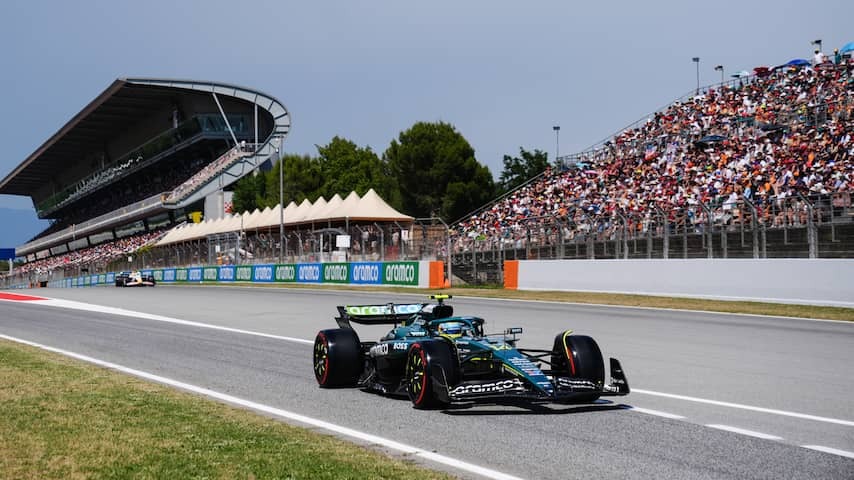
The Formula 1 is growing worldwide, but this is at the expense of iconic circuits. Classic tracks such as Barcelona, Imola and Zandvoort are under pressure or disappearing. Drivers are saddened to see character disappear and commerce take over.
In Barcelona this weekend it is not only about lap times, but especially about how long this race will remain on the calendar. The Grand Prix on the Circuit de Barcelona-Catalunya, uninterrupted on the calendar since 1991, is faltering. From 2026, Madrid will be the new showpiece. Whether Barcelona will be allowed to stay after that is highly uncertain.
Imola no longer has a contract. A return in 2026 is highly unlikely. And Zandvoort, which returned to the calendar in 2021, has already announced that it will stop after 2026. What will replace it: brand new street circuits, built in deserts or suburbs of million-inhabitant cities. Tightly drawn, commercially attractive, but without the soul on which Formula 1 was built.
“I like driving here,” Max Verstappen said on Thursday at Circuit de Barcelona-Catalunya. “It’s just a nice place, very pleasant. Of course, racing here is sometimes a bit more difficult. But for Formula 1 it would be a loss if we left here. It is also good for the fans here. You are close to Barcelona. But I also understand that they might want to build something in Madrid and create hype there.”
Anyone walking through the outdated Circuit de Barcelona-Catalunya also understands why it is financially difficult here. Moisture flows out of the tunnel towards the paddock, and on warm days you smell – politely said – that it is not clean water. The roads around the circuit are jammed every morning. There is a railway line directly behind the main grandstand, but there is no station.
‘We must guard against preserving historic circuits’
A circuit like Imola has also not stood the test of time. The stands are worn, the paint is peeling and the seats date from another era. And Spa-Francorchamps, which will only be on the calendar every other year from 2027, is also falling short. The fan experience is poor: hours stuck in traffic, endless queues for musty portaloos and one rickety shuttle bus trying to drag tens of thousands of visitors through the Ardennes.
And yet, World Cup leader Oscar Piastri warns that Formula 1 must be careful. “Zandvoort is disappearing, Spa is being rotated, I honestly think it’s a shame. We really need to protect the preservation of these historic circuits.”
In the paddock there is frustration about what is coming back. Circuits such as Jeddah, Miami and Las Vegas have no natural flow, no history. Everything feels artificial. “Two races in the same country, with so much supply from all over the world, may no longer be logical,” said Piastri, who does understand Formula 1’s choice. “And if you have to choose between Imola and Monza when it comes to Italy… well, it’s difficult to drop Monza. People would be standing in front of the gates for that.”
Meanwhile, Madrid is investing hundreds of millions in a completely new Formula 1 experience. A semi-street circuit with hypermodern facilities, excellent accessibility and plenty of space for hospitality and show. In the logic of Liberty Media, which exploits the sport as a brand, the calculation is simple.
Alonso wants to know nothing about leaving Barcelona
But in the paddock, that logic is not shared everywhere. Fernando Alonso thinks that there is still a future for Barcelona. “I don’t think we are going to lose Barcelona. That is not only my opinion, but also my wish,” he said firmly earlier this weekend.
“Formula 1 and Barcelona are closely linked. We have been testing here for decades. If teams are allowed to choose one test location, they always choose Barcelona. The circuit has improved a lot in recent years, from the paddock to the stands. Barcelona has been here for thirty years, and will still be there in thirty years. Some new locations will disappear. But Barcelona will stay. And if not, it will always come back.”
Ultimately, it comes down to a fundamental question: should Formula 1 be able to grow everywhere, or should the sport also remain true to its roots? In Barcelona, this tension is palpable everywhere this weekend.
Because despite the damp tunnel, the jammed traffic and the outdated stands, this place still exudes Formula 1. Not in glitter and LED panels, but in the asphalt, the public and the history.
Verstappen wrote a new chapter there in 2016 by winning his first race as an eighteen-year-old. Even if it becomes another procession on Sunday, Barcelona belongs on the calendar. But whether the high bosses in Formula 1 see it that way is questionable.